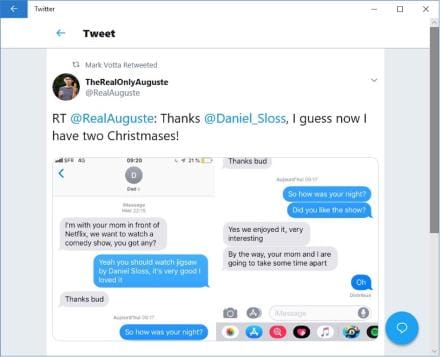I don’t speak because I love applause…
I mean, sure, it’s really, really nice to hear.
But it’s much more important to me that I make an impact on the lives of people around me. Sometimes I’ll get an email from someone who saw me speak or read one of my books. They tell me it changed their lives…
Gosh… that’s why I do this, folks. That’s why I’m a speaker!
So, what about you?
Are you in it for the applause… or are you hoping to make a real impact?
(No judgement!)
If you are like me and want to change lives, then you can learn some valuable lessons from a Scottish comedian named Daniel Sloss.

Sloss made a huge impact and he knows it.
Sure, he uses lots of swear words and raunchy humor to present his message… But after his Netflix special on relationships, he also managed to prompt 120,000 breakups, 350 cancelled engagements, and 300 divorces… in just THREE years!

That’s impact!
Now, how can you apply those same techniques to build impact in your own speech? Let’s break it down…
Time to Build a Talk That Changes Lives
Most talks you see by the average speaker fall into one of two categories…
Some are “how to” talks filled with actionable steps and straight-forward presentation. Some are designed mainly to entertain you. It’s like those speakers are a magician with a message – ready to saw the lady in half for the sake of higher ratings.
What I really love about Sloss’s performance is that he avoids both categories completely. He never says “Here’s what you need to do.”
Instead he delivers the education and entertainment elements purely by presenting an idea and letting you go on a journey of self-discovery. The transformation he creates in his audience members doesn’t come from clarity, but rather from confrontation.
As a speaker, you need to start your own talk by identifying the real problem. Don’t start by trying to convince people of something. Instead, start with a lie that your audience has come to believe over the years.
In Sloss’s case, he starts with the lie that every person needs the perfect romantic partner in order to be whole and happy in life.
This statement makes many people uncomfortable and tension rises in the room.
Personally, I start my Curiosity Factor speech with the lie we’re told that all marketing content needs to be short and easily consumed.
Both of these lies are snackable ideas – easy to understand and digest.
From there, we can move into the truths that actually exist in the world…
… people don’t need a perfect romantic partner to be whole.
… content can be as long as we want as long as we want. TV proves this. We just need to learn from them and adjust how our content is presented.
In both of these cases, the tension doesn’t necessarily come from what the lie says. Instead, it comes from the fact that we’ve been lied to at all.
What you thought was real in this world, isn’t. What you thought was the truth, isn’t. What you thought was a steadfast rule you couldn’t break, wasn’t.
See?
Then, you can spend the rest of the speech explaining why the lie is a lie and transforming how your audience thinks, feels, and acts around that issue.
In other words, you create a transformation. You create impact.





